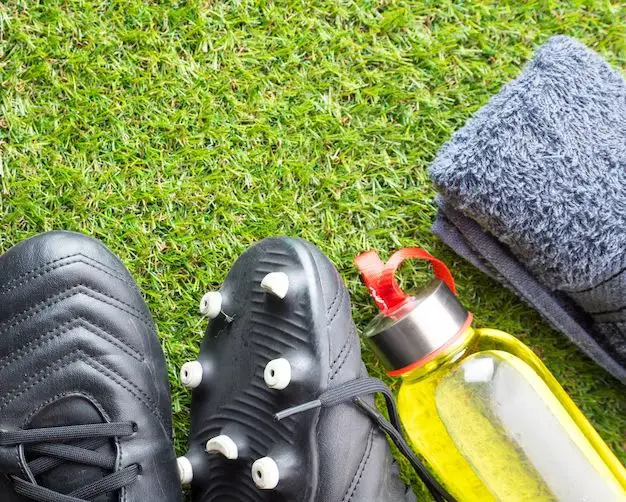Whether spike shoes work well on lawn depends on a few key factors. Spike shoes, also known as cleats, are shoes with protruding studs on the bottom that are designed to provide traction and grip on natural grass sports fields like football and soccer pitches. Using cleats on lawn or turf can sometimes damage the grass if used improperly. However, with some precautions, spike shoes can be worn on lawn under certain conditions without causing excessive damage. In this article, we’ll look at when it’s appropriate to use cleats on lawn, tips to minimize damage, and alternatives to consider.
Page Contents
When Can You Use Cleats on Lawn?
Here are some general guidelines for when it may be acceptable to use spike shoes on lawn:
- During sports games/practices – Cleats are standard gear for sports like football, soccer, lacrosse, and rugby which are often played on grass fields. Using cleats provides necessary traction during play.
- On thicker, heartier grasses – Sturdy cool season grasses like tall fescue may hold up better to cleats than more delicate warm season turfgrasses.
- In dry conditions – Cleats do less damage when the lawn is firm and dry rather than wet and soft.
- Occasional or minimal use – Occasional foot traffic with cleats across a large area is less likely to cause noticeable damage than frequent concentrated use.
- On older, established lawns – Mature, thick lawns can typically tolerate more cleat use than newly seeded or sodded lawns.
It’s best to avoid or minimize cleat use on thinner, more delicate grasses and during the early phase of lawn establishment. Wet, muddy conditions when the ground is soft can also lead to excessive cleat damage on any type of grass.
Tips to Minimize Cleat Damage on Lawn
If you do need to use spike shoes on a lawn, here are some tips to reduce potential damage:
- Use cleats with shorter studs – Longer soccer studs or football cleats dig deeper and can cause more divots and tearing of the grass compared to shoes with shorter studs.
- Rotate activity areas – Spread out activity over a larger area instead of repetitively running/turning in the same spots.
- Avoid sharp turns and stops – Gradual turns and stops put less torsional stress on the turf compared to sudden, sharp cuts.
- Allow grass recovery time – Leave cleated areas alone for a few days after use to allow the grass blades to regrow and fill in divots.
- Fill divots and reseed if needed – After moderate cleat use, fill any holes or divots with soil and reseed damaged spots to maintain turf density.
- Aerate the soil – Aerating alleviates soil compaction which helps grass rebound from cleat damage.
Making small adjustments to how spike shoes are used on lawn along with proper follow-up care can help minimize negative impacts to the grass.
Alternatives to Cleats for Lawn Sports & Activities
If you want to protect your lawn from cleat damage or need traction for activities besides traditional sports, consider these options:
- Turf shoes – Made for use on synthetic turf, these have small rubber studs good for natural grass too.
- Training shoes – Typical running/cross-training shoes work well for light recreation on lawn.
- Sneaker spikes – These temporary spike attachments for sneakers provide grip while minimizing grass damage.
- Court shoes – Tennis shoes and the like are ideal for lawn games like bocce or croquet.
- Bare feet – For kids play and leisure activities on home lawn, bare feet spread out impact.
There are plenty of shoes that give reasonable traction on lawn without all the potential drawbacks of traditional cleats.
Key Considerations for Cleats on Lawn
To summarize the key points on using spike shoes on lawn:
- Cleats are best suited for established, hearty grass varieties and lawns.
- Avoid excessive use in concentrated areas or on wet, muddy turf.
- Shorter studs do less damage than long spikes.
- Minimize sharp turns and allow grass to recover between uses.
- Turf shoes, training shoes, and sneaker spikes are lower-impact alternatives.
With smart precautions, occasional cleat use likely won’t harm thicker, mature lawns. But for regular recreational use, switching to turf shoes or sneakers helps safeguard grass health. Consider lawn conditions and intended use patterns when deciding on appropriate footwear.
Conclusion
Spike shoes can be used on lawn in certain situations, especially sports requiring cleats on grass fields during dry conditions. But frequent, intense use on the same spots or use on wet, soft turf is likely to damage the grass. Measures like rotating activity areas, using alternative shoes with shorter studs, and allowing the lawn time to recover can allow for cleat use with minimal impact. For regular recreational activities on home lawn, shoes without long spikes are ideal to avoid excessive wear and tear on the grass. Considering lawn health, cleat design, usage frequency, and grass recovery time helps determine if and when spike shoes are appropriate on a natural lawn. With mindful use, cleats and lawn can coexist successfully.
